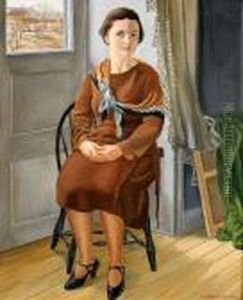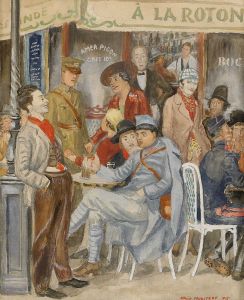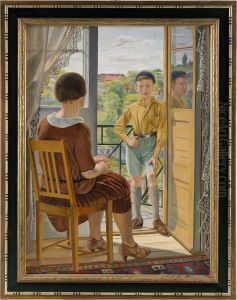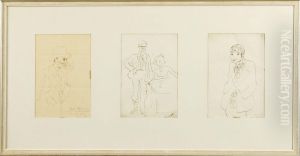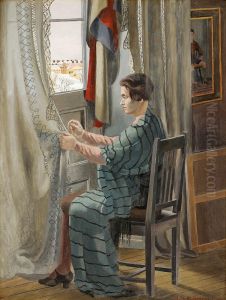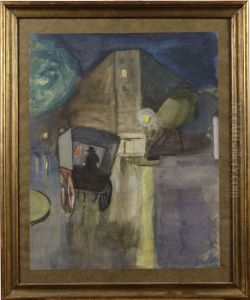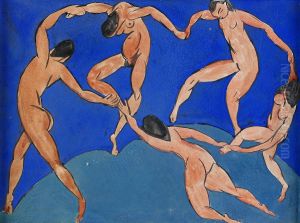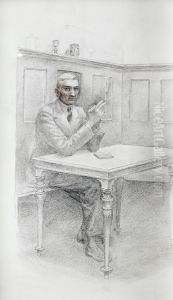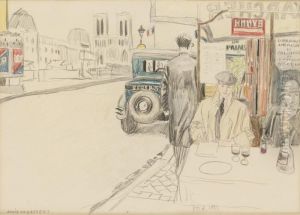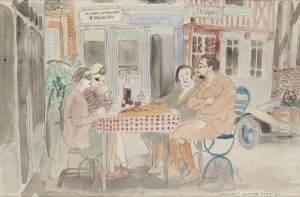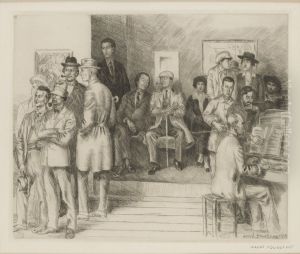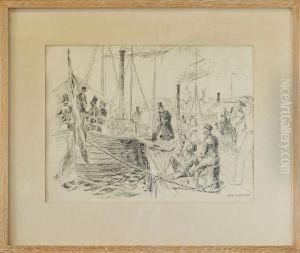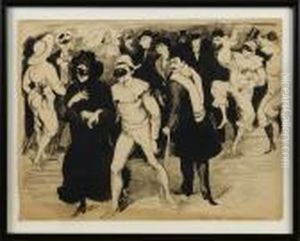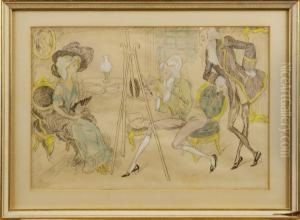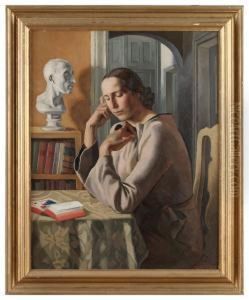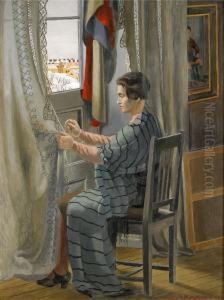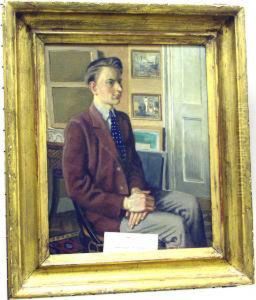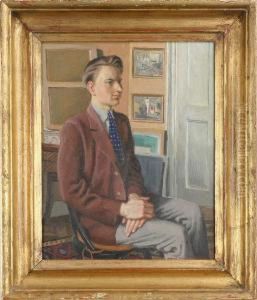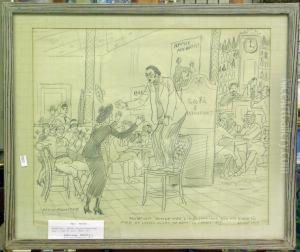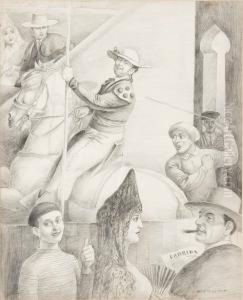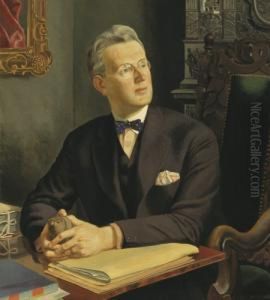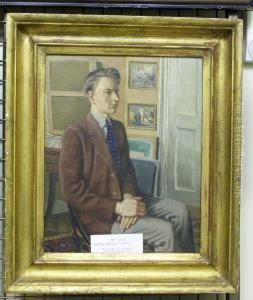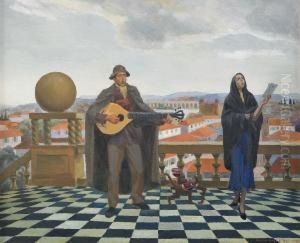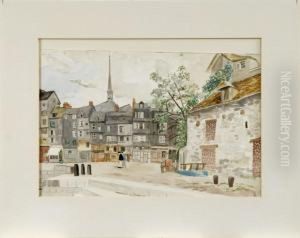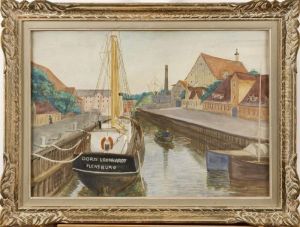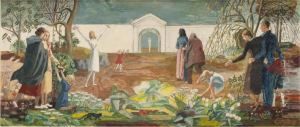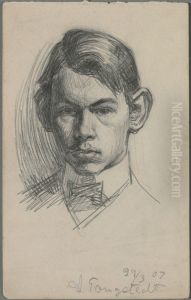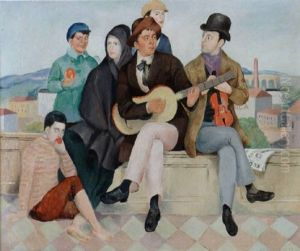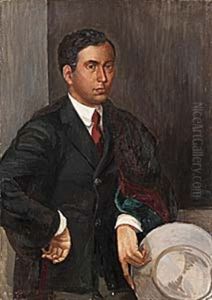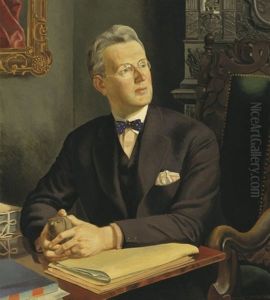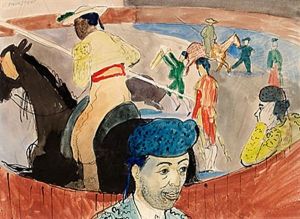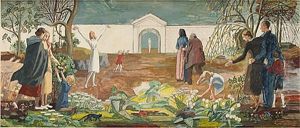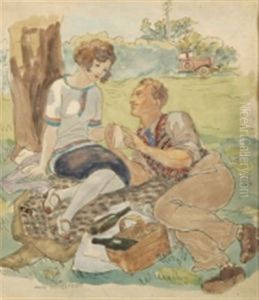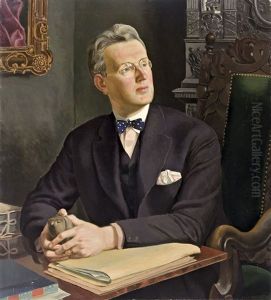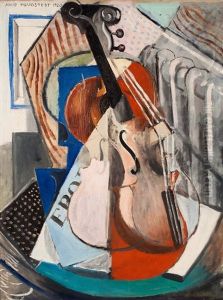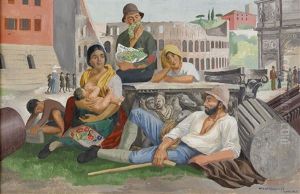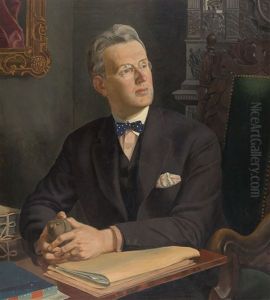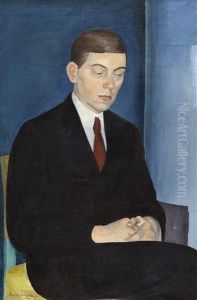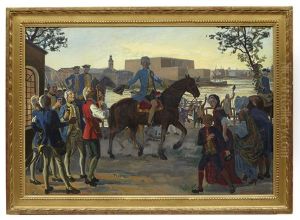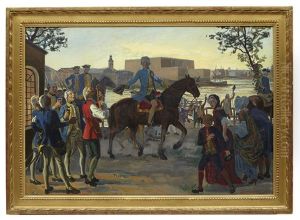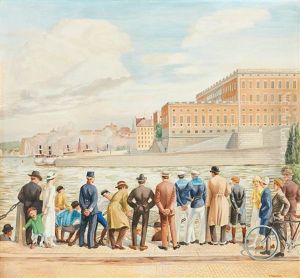Arvid Fougstedt Paintings
Arvid Fougstedt was a Swedish painter and graphic artist born on November 21, 1888, in Kristinehamn, Sweden. He is known for his contributions to the Swedish art scene, particularly in the early 20th century. His work often reflects the influence of Art Nouveau and later on, elements of the national romantic style that was prevalent in Sweden during that era.
Fougstedt began his education in the arts at the Technical School in Stockholm, which is now known as the Konstfack or University College of Arts, Crafts, and Design. He later continued his studies at the Royal Swedish Academy of Arts, where he was able to further hone his skills and develop his unique style.
Throughout his career, Arvid Fougstedt worked with a variety of mediums, including oil painting, watercolors, and graphic art. He was also a skilled illustrator and contributed to various periodicals and books, which helped him gain recognition within the literary and artistic communities.
Fougstedt's art was characterized by its lyrical and often whimsical nature, with a strong emphasis on decorative elements. He had an affinity for portraying nature, particularly flowers and landscapes, with a delicate touch and a keen eye for detail.
During his lifetime, Fougstedt participated in numerous exhibitions and was a member of several art societies. His works were exhibited not only in Sweden but also internationally, and they contributed to the spread of Swedish art and culture beyond the country's borders.
Arvid Fougstedt's legacy in the Swedish art world is marked by his dedication to capturing the beauty of the natural world and his ability to infuse his works with a sense of enchantment. He passed away on April 20, 1949, in Stockholm, leaving behind a body of work that continues to be appreciated for its artistic merit and historical significance.
